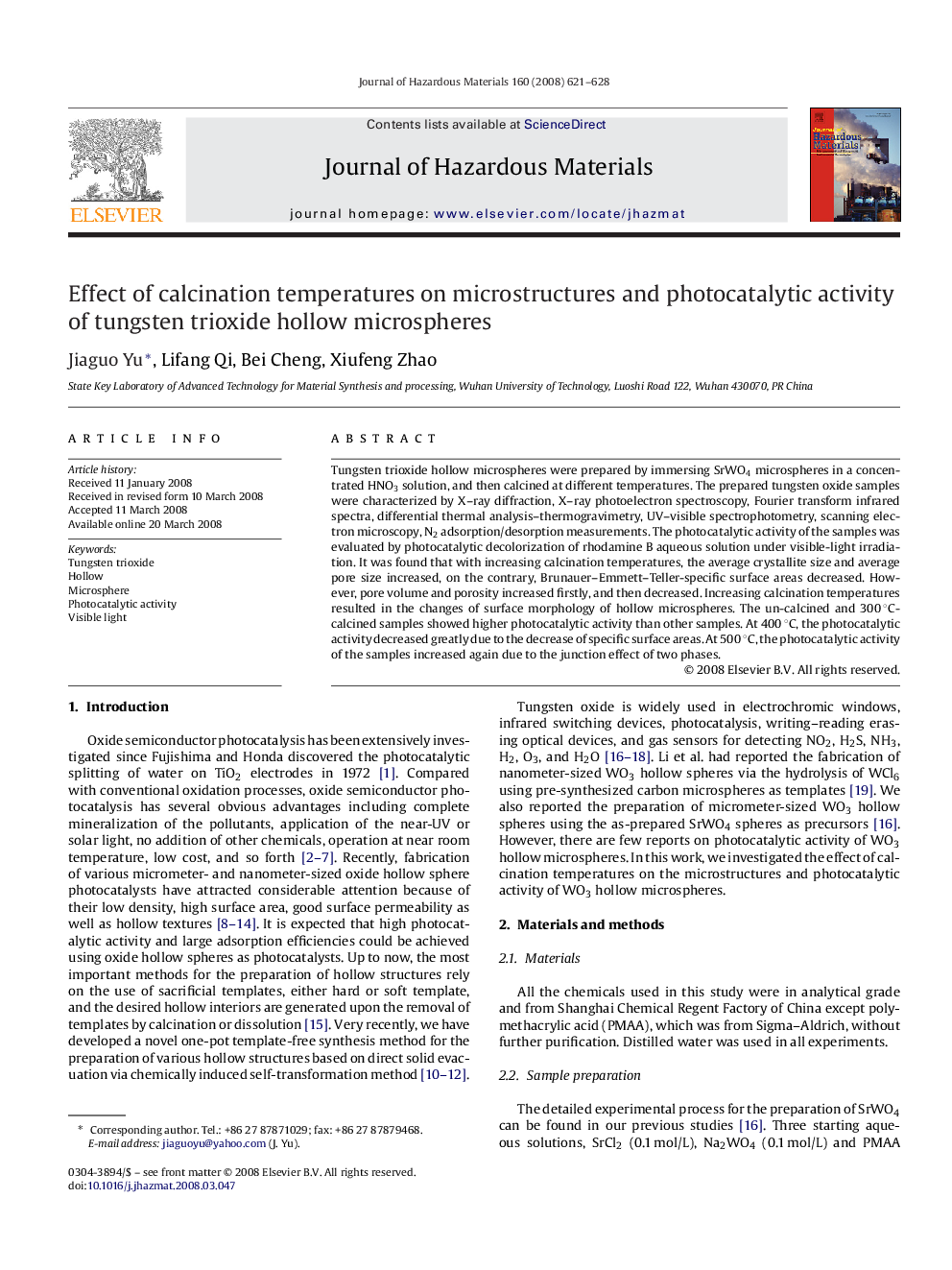| Article ID | Journal | Published Year | Pages | File Type |
|---|---|---|---|---|
| 582764 | Journal of Hazardous Materials | 2008 | 8 Pages |
Abstract
Tungsten trioxide hollow microspheres were prepared by immersing SrWO4 microspheres in a concentrated HNO3 solution, and then calcined at different temperatures. The prepared tungsten oxide samples were characterized by X-ray diffraction, X-ray photoelectron spectroscopy, Fourier transform infrared spectra, differential thermal analysis-thermogravimetry, UV-visible spectrophotometry, scanning electron microscopy, N2 adsorption/desorption measurements. The photocatalytic activity of the samples was evaluated by photocatalytic decolorization of rhodamine B aqueous solution under visible-light irradiation. It was found that with increasing calcination temperatures, the average crystallite size and average pore size increased, on the contrary, Brunauer-Emmett-Teller-specific surface areas decreased. However, pore volume and porosity increased firstly, and then decreased. Increasing calcination temperatures resulted in the changes of surface morphology of hollow microspheres. The un-calcined and 300 °C-calcined samples showed higher photocatalytic activity than other samples. At 400 °C, the photocatalytic activity decreased greatly due to the decrease of specific surface areas. At 500 °C, the photocatalytic activity of the samples increased again due to the junction effect of two phases.
Related Topics
Physical Sciences and Engineering
Chemical Engineering
Chemical Health and Safety
Authors
Jiaguo Yu, Lifang Qi, Bei Cheng, Xiufeng Zhao,
